第51章 HUMAN UTILITY OFCONSUMPTION(2)
This does not necessarily imply very wide differences in the aggregate quantity of wealth which can be usefully consumed by different persons, because deficiencies in some tastes or capacities may be compensated by development of others.Moreover, the widest personal differences will usually lie outside the range of economic satisfaction.Yet even among economic consumers there will be considerable differences in the amount of organic service or satisfaction that different persons can get out of the same amount of goods.A noble work of art, as Ruskin insisted, has no value for primitive peasants without cultivated tastes.The finest library of serious literature has little value to-day in an ordinary English industrial town.But it is needless to multiply examples to illustrate the truth that the vital value got from any stock of consumable wealth must depend upon the capacity of those into whose hands it passes to make a good use of it.In other words, it depends upon how far the consumer has acquired the art of consumption.Nor is this merely a question of developing and cultivating sound tastes in a class or a people.It is often a matter of knowledge how to extract and utilise the utility which goods contain.It is sometimes pointed out that over 90 per cent of the heating power of coal burned in domestic fires is wasted.Improved grates, or the substitution of some central heating system, might stop a considerable portion of this waste, securing an increase of heating power and of its vital value out of each ton burned.
§2.Until we know then 'What are the concrete goods represented by the £2,000,000,000 income? How are they apportioned among different classes of the consuming public? How far are those who get these goods qualified to get the vital value out of them?' we cannot compute, even in general terms, the aggregate human utility they carry.
Our calculus of the human utility of consumption will thus in form and method closely correspond with our calculus of the human cost of production.
Taking as the subject-matter of our analysis the goods and services constituting the real income of the nation, our analysis of production endeavoured to apply two criteria, one relating to the Arts of Production actually employed, the other to the Distribution of the productive efforts involved in the employment of these arts.Similarly, our analysis of consumption rests upon the application of like criteria to the Arts of Consumption and the Distribution of consuming power.
In the productive analysis, considerations of the methods of industry, in relation to the quantity of creative and imitative, interesting and repellent work, the use of machinery and subdivided labour, the elements of forethought, risk-taking, and organisation, length of the work-day, regularity of employment, apportionment of routine industry among the grades and classes of producers, are found to be the main determinants of the sum of human costs.A similar analysis, applied to the consideration of the standards and methods of consumption prevailing among the different grades and classes of consumers, and to the distribution of consuming power among these classes as to amount and regularity, will yield a sum of human utility.
But in approaching the arts of consumption, we find they have not developed in the same way as the arts of production.
Starting from primitive society with the practically self-sufficing family group, where everybody took a hand in the different sorts of work and a share in the consumption of the different products, we find ourselves carried along a career of continual differentiation of labour not attended by any corresponding differentiation of consumption.Industry passes into large cooperative forms outside the single family, with constantly finer division of labour.But consumption is still chiefly carried on within the limit of the single family,1 and, so far from being specialised, it becomes more generalised.This contrast of man as producer and consumer is of the first importance.Modern industrial evolution shows a man becoming narrower and more specialised on his producing side, wider and more various on his consuming side.As worker, he is confined to the constant repetition of some section of a process in the production of a single class of article.
As consumer, he is in direct contact with thousands of different sorts of workers in all parts of the world, and by his various consumption applies a direct stimulus which vibrates through the whole industrial system.As producer he is 'the one', as consumer 'the many'.
This diverging tendency in the economic evolution of man has important human implications which will concern us later.At present it concerns us in its bearing upon the arts of consumption.
§3.The great complex unit of productive activities which engaged our attention was the Business.Productive economy, the amount of human cost involved in the production of a given quantity of goods, depended, as we saw, upon the structure and working of this Business.What is the consumptive unit that corresponds to the Business? It is the Family, or Home, regarded on its economic side.There is an economy of consumption in the family standard of life as important for social welfare as the economy of production in the Business.As the former stands towards costs of Production, so the other stands towards utility of Consumption.As the economy of Production chiefly consists in minimising cost, so the economy of Consumption should consist in maximising utility.But the standard of consumption has in modern times not been subjected to the same forces as have operated upon production.